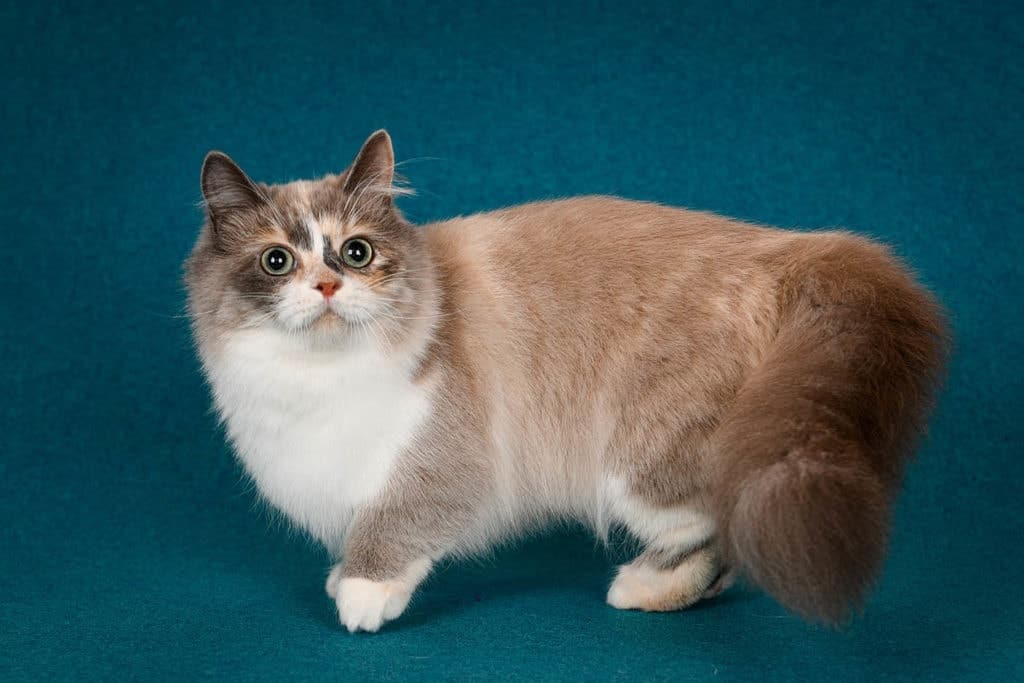You may have heard of the craze surrounding the Munchkin cat breed. This breed, like the Dachshund, has abnormally short limbs for the species, and humans have just decided that this is so cute that they are breeding cats specifically to have deformed short legs. As with any genetic trait bred into a breed standard, there has been quite a bit of chatter surrounding these cats in the scientific and veterinary communities because it’s not the best look to breed for a genetic deformity.
Advocates for the Munchkin breed claim that the deformity causes no meaningful adverse effects in the cats. However, scientists and veterinarians aren’t so sure that breeding cats for this deformity benefits them. Some argue that it’s cruel to breed an intentionally deformed animal. Here are all the facts about the Munchkin deformity.
The Science of the Munchkin Cat: Why Are Their Legs So Darn Short?
Munchkin cats generally suffer from two deformities: achondroplasia and chondrodysplasia. Achondroplasia—sometimes referred to as ‘dwarfism’—is the improper development of the bony plates due to a biological issue with the fibroblast growth factor receptor. Chondrodysplasia is the inappropriate development of the tissues and cartilage making up the arms and legs.
Due to these conditions, Munchkin cats’ legs fail to develop correctly, resulting in abnormally short legs. This genetic mutation is not a joke. A significant proportion of Munchkin cats die before or shortly after birth because of this genetic mutation. As a result, many breed clubs refuse to recognize the breed officially or include it in shows.
Shortened fore and hind limbs are the qualifying features of the Munchkin breed. They can be long or short-haired. This deformity is often correlated with pervasive incidences of osteoarthritis and other major joint diseases. Osteoarthritis causes widespread joint pain, difficulty with mobility, and joint stiffness.

Does Having Short Limbs Negatively Impact Their Health and Well-being?
Munchkin cats have difficulty moving and behaving normally when compared to other cats. It can be hard to assess and quantify this impact on the cat’s welfare, especially since the cats are relatively new to the market. It can be said that since their condition is heavily correlated with pervasive osteoarthritis, they are innately unhealthy, and many veterinarians and animal welfare authorities agree with this assessment of the situation.
How Early Are Munchkin Cats Affected by Their Condition?
These abnormalities are present in Munchkin cats from the time they are born. Most affected cats adapt to their situation and learn to minimize the impact of their condition. Still, as they age, their joints will start to degenerate and cause further pain and disability in the affected cat.
While these painful conditions can be controlled with painkillers, the painkillers often cause further complications with the cats’ health, and severe side effects from the medication are a potent risk. All Munchkin cats are affected by the conditions mentioned here as they are an innate part of the development of cats with chondrodysplasia.
How is Chondrodysplasia Diagnosed in Cats?
Cats with chondrodysplasia have visibly different features, even in kittenhood. Kittens with two copies of the gene generally die before birth (stillborn), while kittens with only one copy of the gene are born alive with the deformity.
Since all Munchkin cats have at least one copy of the affected gene, some portion of the kittens will inherit two Munchkin genes from their parents and be stillborn. A similar proportion of the kittens will have two normal genes and have regular legs. But many surviving kittens—about 50% of the total litter, including stillborns—will have inherited the disease from their parents.

Are Munchkin Cats Ill?
By definition, yes, Munchkin cats are born with a genetic illness. Some arguments for the creation and perpetuation of this breed include justifying it with the existence of dogs with short legs, such as Basset Hounds and Dachshunds. Still, it’s worth noting that these dogs are also ill and have similar mobility and joint disease problems.
While some arguments have been made for the coat quality or personalities of Munchkin cats, that doesn’t necessarily justify breeding animals that are unwell with other unwell animals to produce more unwell animals.
How Can We Fix the Health Problems Associated with Chondrodysplasia?
One proposed solution is to breed Munchkin-derived cats by cross-breeding Munchkin cats with other breeds that have a similar trait set. By producing a Munchkin parent with a typical-limbed cat, you can maintain the genetic traits you want while selectively breeding out the limb deformity.
Final Thoughts
While Munchkin cats may be adorable, they are physically unwell, and animal welfare experts are rightly challenging the propagation and perpetuation of the breed. There are many proposed solutions for maintaining the unique, harmless qualities of the Munchkin cat while breeding away from the limb deformity they’ve become associated with.
Featured Image Credit: Shutterstock














